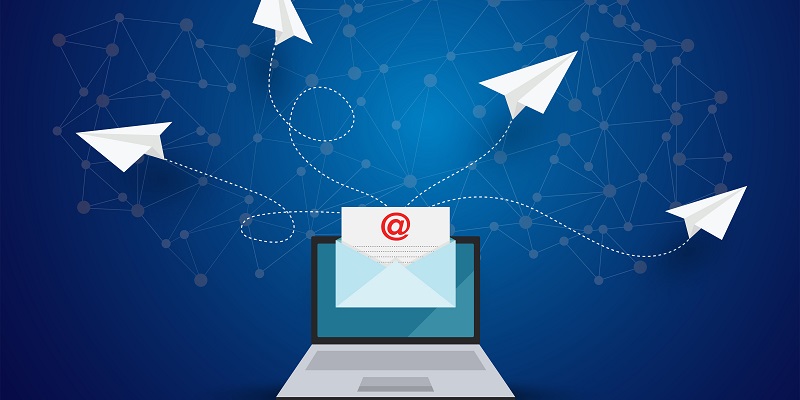Email marketing is one of the most effective digital marketing channels for building relationships with customers and driving sales. When executed correctly, a well-crafted email marketing strategy can help you reach your target audience, reinforce your brand message, and boost conversions. However, creating and running an effective email campaign requires more than just a list of subscribers and a set of templates. In this article, we will provide you with a comprehensive guide to creating and executing successful email marketing campaigns that will help you achieve your business objectives.
The Importance of Establishing Clear Goals for Email Marketing Campaigns
Before starting to create an email campaign, it is essential to set clear goals. Establishing clear goals for your email marketing campaigns will help guide your strategy and measure success. Your goals may include increasing website traffic, boosting sales, building brand awareness, or nurturing relationships with subscribers. By defining your goals upfront, you will have a better understanding of what metrics to track and how to adjust your email campaign strategy accordingly.
Strategies to grow your email list
To build a successful email campaign, you need a list of subscribers who are interested in what you have to offer. There are several strategies to grow your email list, including opt-in forms, lead magnets, and other tactics to attract subscribers. Opt-in forms are a useful tool for collecting subscriber information. By strategically placing opt-in forms on your website, you can encourage visitors to sign up for your email list. Lead magnets, such as free e-books or exclusive discounts, are an effective way to entice visitors to subscribe to your list. Additionally, promoting your email list through social media, contests, or events can help you attract new subscribers.
Regularly updating and cleaning your email list
Maintaining a clean email list is essential for high deliverability rates. Regularly updating and cleaning your email list will help eliminate invalid or inactive email addresses, reduce your bounce rate, and improve your overall sender reputation. You can use email validation tools to verify your subscribers’ email addresses and filter out invalid ones. Additionally, regularly removing inactive subscribers by sending re-engagement emails can help you maintain a healthy email list and improve your overall email marketing campaign performance.
Creating Engaging Content and Design
Creating engaging content and design is critical to improving open and click-through rates in your email campaigns, leading to better results. The subject line is the first thing subscribers see, so it is essential to create an attention-grabbing headline that will prompt them to open the email. Personalization in emails can significantly enhance open rates, and segmenting your list can help you customize your content for specific audience groups, leading to higher engagement. Moreover, the design of your email campaign should be visually appealing, easy to read, and mobile-responsive.
The Effectiveness of Personalization and Targeting
Personalization and targeting can significantly enhance the effectiveness of your email campaigns by making them more relevant to individual recipients. In today’s digital landscape, customers expect personalized content and offers. By leveraging subscriber data such as browsing history, purchase behavior, and demographic information, you can segment your list and deliver more tailored content to your subscribers. Personalized email campaigns have been shown to improve click-through rates and drive higher conversion rates.
Continuous testing and optimization
Continuous testing and optimization are essential to improve the performance of your email marketing campaigns. By A/B testing subject lines, content, and calls-to-action, you can determine what works best for your subscribers and optimize your email campaigns accordingly. It is also essential to regularly track email campaign metrics, such as open rates, click-through rates, and the number of conversions. By analyzing these metrics, you can identify areas for improvement and continuously refine your email marketing strategy.
The Benefits of a Consistent Sending Schedule
Sending a consistent schedule helps you stay top of mind with your subscribers and maintain a healthy sender reputation. The frequency of your email campaigns depends on your audience and goals. Consider how often your audience would like to receive your emails and be sure to set a consistent schedule. Too many emails can lead to unsubscribes, while not enough can reduce open rates.
Determining the Optimal Frequency for Your Campaigns
Determining the optimal frequency for your campaigns is crucial for maximizing engagement and minimizing unsubscribe rates. Depending on your audience and goals, you may choose to send daily, weekly, or monthly emails. However, the frequency of your email campaigns should not be set in stone – continuously monitor your email metrics, such as open rates and unsubscribe rates, and adjust accordingly.
Email marketing is an important tool for businesses of all sizes. By focusing on the key elements outlined in this guide, you can create compelling email campaigns that resonate with your target audience and support your business objectives. Remember, it is essential to define your goals, grow your email list, create engaging content and design, personalize your campaigns, continuously test and optimize, and determine the optimal frequency for your campaigns. With these strategies in place, and regular evaluation of your metrics, you can watch your email marketing campaigns reach new heights.

